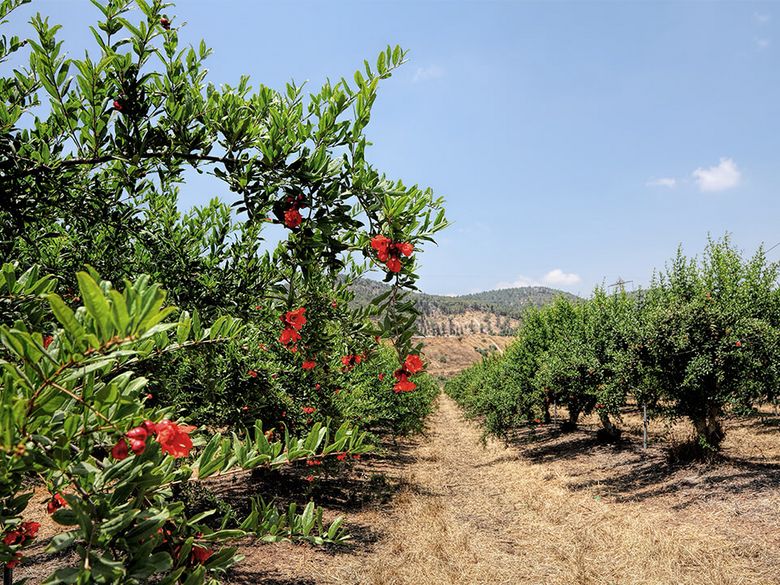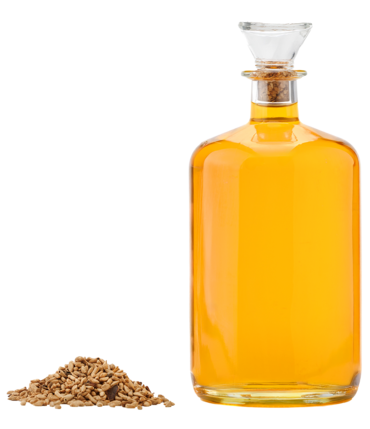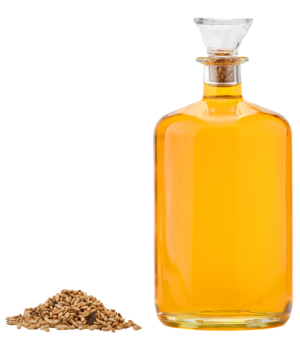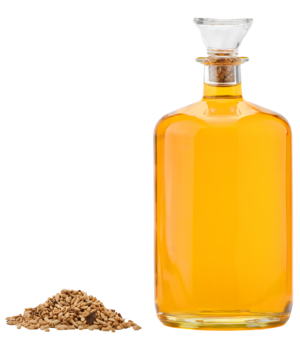Our Pomegranate Seed Oil qualities
We carry Pomegranate Seed Oil in the following qualities for you
Usage
|
Cosmetics |
Food |
Pharmaceutics |
|
|---|---|---|---|
| Pomegranate seed oil cold pressed | |||
| Organic pomegranate seed oil cold pressed |

Pomegranate tree & pomegranate
The pomegranate belongs to the family of the willow family. Wild growing pomegranate trees reach a height of up to five metres. The deciduous tree or shrub bears lancet-shaped leaves. The apple-shaped fruits have a permanent calyx crown, weigh up to 500g and reach a diameter of up to 10 cm. The leathery skin of the pomegranate is about five millimetres thick. This allows the pomegranate to be stored for several months without losing quality. When the pomegranate is opened, up to 400 small seeds, enclosed by juicy, pale yellow to red flesh, appear. The white, inedible partitions divide the seeds into fruit cavities. The taste of the small fruit grains is unique. The plant blossoms between June and September. The flowers are relatively large and bell-shaped, orange-red to light yellow.
Pomegranate trees can live for several hundred years and are among the oldest cultivated plants in the world. The plant thrives best in a warm, sunny climate.
Would you like to be informed about the general market situation of Pomegranate Seed Oil and our other products?
subscribe to market reportCultivation & yield
Pomegranates are cultivated in all warm countries. Well-known growing areas are the whole Mediterranean area, Afghanistan, Israel and Iran. The harvest time is between September and December. The state of ripeness can be determined by the appearance of the pomegranate itself. It must have taken on an orange-red colour and show cracks and spots.

Background / history
The origin of the pomegranate probably is in Persia, where it was already cultivated more than 3000 years ago.
The pomegranate can be found in Christianity and Greek mythology as a symbol of domination and power, as well as love and fertility. Various Greek deities were attributed a connection to the pomegranate. A pomegranate tree is said to have grown from Dionysus' blood and Aphrodite is said to have grown a pomegranate tree herself in Cyprus.
The term "pomegranate" comes from Latin and means "seeded".
190
kg
Drum
27
kg
Canister
General durability: canister 12 months, drum 18 months
Nutritional values & composition
| Nutritional value | (per 100g) |
| Energy | 3,700 kJ / 900 kcal |
| Fat | 100 g |
| Saturated fatty acids | 6 g |
| Monounsaturated fatty acids | 6 g |
| Polyunsaturated fatty acids | 88 g |
Fatty acids ratio
Composition
| C16:0 Palmitic acid | 2 – 5 % |
| C18:1 Oleic acid | 4 – 20 % |
| C18:2 Linoleic acid | 4 – 15 % |
You want to buy Pomegranate Seed Oil?
Request now free of charge and without obligation from Gustav Heess. We deliver Pomegranate Seed Oil ...
- worldwide
- fast
- reliable
We offer Pomegranate Seed Oil in the following packaging units:
-
190
kg
Drum -
27
kg
Canister

